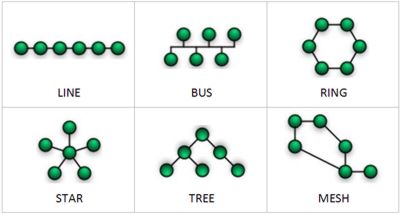





You can manage TraxBus in many ways.
Use a standard fieldbus or even direct contact without any programming.

TraxBus Networks
TraxBus is an industrial network system for distributed control using a multi-drop wire pair: digital communication enables improved control capability which can improve product yields.
Near real-time operation is possible, despite the relatively low speed, thanks to an efficient protocol.
TraxBus features high electromagnetic noise immunity and great wiring simplicity, also using busbar trunkets: possible application are in hostile industrial environments where other standard networks doesn't work.
- • TypeASYN MULTIDROP HALF DUPLEX
- • Bus Voltage≤ 30VDC
- • Allowable Voltage Dropout< 3V
- • Allowable Line Capacitance< 100nF
- • Baud Rate38400 MAX
- • Allowed line length1000 m MAX
Live connection and disconnection – while the communication is running – are allowed, though a short break in the data flow may result from this operation.
A short-circuit on the TraxBus while the master is transmitting can damage the driver, a limited time short-circuit while the unit is in idle mode (receiving) is tolerated.
Specific set of commands available for each device equipped with TraxBus interface (see detailed information on respective device technical literature).
TraxBus was initially justified by the considerable cost savings that resulted from using less wiring.
Additional advantages is the ability to diagnose equipment problems, cut maintenance costs, provide information for asset management, allow control at the
device level, and allow the use of smart devices.
A manufacturer did a study of savings it found by using TraxBus.
- Wiring
- More than 90% reduction in wiring, eliminating the costly maze of cables from the field to the control room.
- Logistic
- Less material to be sent on site and consequently shipping and management costs.
- Control cabinet
- Fewer terminations also freed up cabinet space that would be required with traditional technology.
- Commissioning
- Field check-out time was largely reduced. Installation of each controller took minutes rather than hours.
- Engineering drawings
- Reduced the efforts for new drawings when changing kiln architecture by adding, moving or removing burners.

TraxBus can be wired in any form: star, ring, line or mixed; signal line must be wired separately from power lines.
Do not use shielded cables. Do not use multicore cables or limit the usage to short stubs.
Use conventional single wires or busbar trunkets to interconnect all peripherals.
If some shielding is necessary it is always possible to put cable pair in a conduit or grounded metal tube, avoiding to pack too many conductors together.
Line capacitance and resistance are important factors.
Excessive resistance will cancel data flow from MASTER to peripherals, while excessive capacitance will cancel data flow from peripherals to MASTER.

Overall bus capacity < 100 nF
Loop resistance < 60 Ω
Core cross-section > 1 mm2
